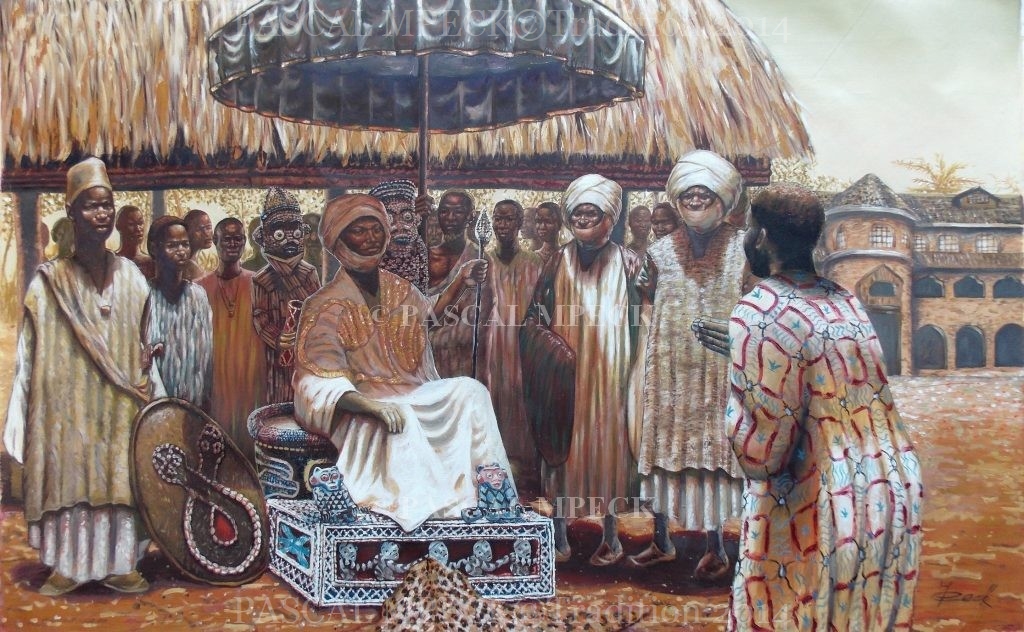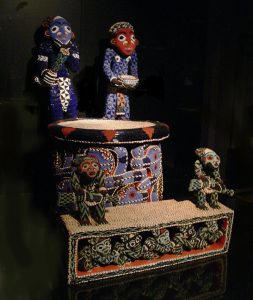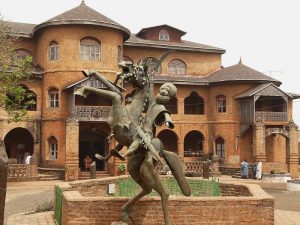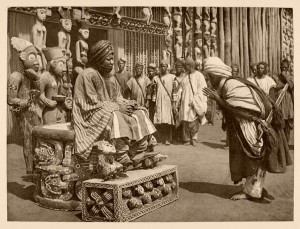|
|
Since the creation of the Bamoun kingdom, around 1392, the Sultan and his subjects met for a secret ceremony called Nguon. The keepers of the Bamoun tradition walked by the Sultan/King and kneel before him in memory of the founding fathers. During the ceremony the Sultan would descend from his pearlcovered throne, would leave the seat empty, and would stand before his people. The people would then decide whether to destitute him or to reinstate him for another term. Ibrahima Njoya XVII, then nineteen, started his reign which lasted until 1931, in the region that is now called Cameroon, but was then ruled by the Germans. He admired colonial architecture and had the palace built which is now called The Sultan Palace. As a man of dialogue and peace, and an astute diplomat, he managed to keep his country in peace until the arrival of the French colonialists who destituted him in 1931. He died in 1933. |
|
|
Photo 1 : Crédits : Musée ethnologique de Berlin / WikiCommons
Photo 2 : Marie-Pauline Thorbecke, Rautenstraucht-Joest Museum für Völkerkunde, Cologne.





